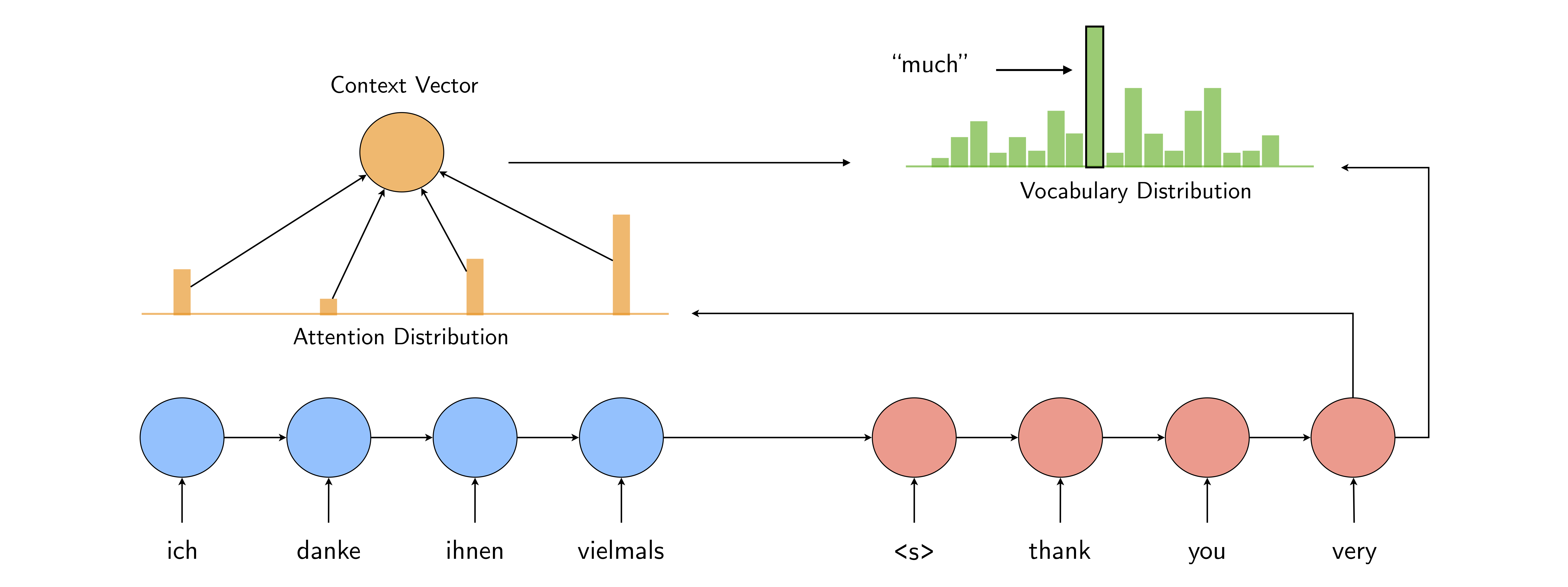This repository contains PyTorch implementations of sequence to sequence models for machine translation. The code is based on fairseq and purportedly made simple for the sake of readability, although main features such as multi-GPU training and beam search remain intact.
Two encoder-decoder models are implemented in this repository: a classic model based on LSTM networks with attention mechanism (Bahdanau et al.) and Transformer, a recently favored model built entirely from self-attention (Vaswani et al.).
The code was written for Python 3.6 or higher, and it has been tested with PyTorch 0.4.1. Training is only available with GPU. To get started, try to clone the repository
git clone https://github.com/tangbinh/machine-translation
cd machine-translationTo download the IWSLT'14 DE-EN dataset and perform tokenization, it might be easier to just run:
bash download.shThen, the following commands help build dictionaries and map tokens into indices:
DATA_PATH=data/iwslt14.tokenized.de-en
python preprocess.py --source-lang de --target-lang en --train-prefix $DATA_PATH/train --valid-prefix $DATA_PATH/valid --test-prefix $DATA_PATH/test --dest-dir data-bin/iwslt14.tokenized.de-enTo get started with training a model on SQuAD, you might find the following commands helpful:
python train.py --data data-bin/iwslt14.tokenized.de-en --source-lang de --target-lang en --lr 0.25 --clip-norm 0.1 --max-tokens 12000 --save-dir checkpoints/transformerWhen the training is done, you can make predictions and compute BLEU scores:
python generate.py --data data-bin/iwslt14.tokenized.de-en --checkpoint-path checkpoints/transformer/checkpoint_best.pt > /tmp/lstm.out
grep ^H /tmp/lstm.out | cut -f2- | sed -r 's/'$(echo -e "\033")'\[[0-9]{1,2}(;([0-9]{1,2})?)?[mK]//g' > /tmp/transformer.sys
grep ^T /tmp/lstm.out | cut -f2- | sed -r 's/'$(echo -e "\033")'\[[0-9]{1,2}(;([0-9]{1,2})?)?[mK]//g' > /tmp/transformer.ref
python score.py --reference /tmp/transformer.ref --system /tmp/transformer.sys